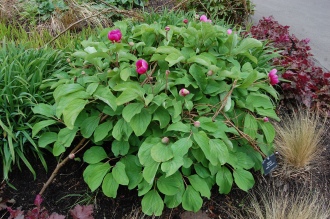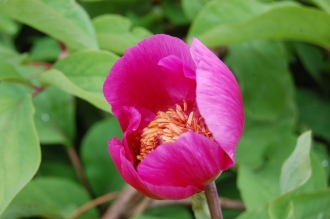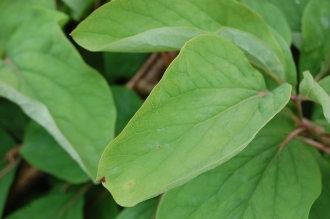Position: Full sun to partial shade
Flowering period: Late spring
Soil: Moist, well drained
Eventual Height: 90cm
Eventual Spread: 1m
Hardiness: 8a, 8b, 9a, 9b, 10a
Family: Paeoniaceae
Paeonia mascula ssp mascula is a deciduous herbaceous perennial with a clump forming habit. Its mid green leaves are divided into up to three ovate leaflets and up to 20cm long. Its red single flowers appear in the leaf axis terminally and are up to 20cm across.
Paeonia mascula ssp mascula, commonly known as the Wild Peony or Male Peony, is native to south eastern Europe to Iran. In its native habitat it grows at forest margins, meadows and limestone slopes.
The etymological root of the binomial name Paeonia is named after Paeon, a Greek physician of the gods who, in mythology, was changed into a flower by Pluto. Mascula is derived from the Latin masculinus menaing ‘male’.
The landscape architect may find Paeonia mascula ssp mascula useful as part of a herbaceous planting scheme with its attractive flowers. Once established this perennial is drough tollerant.
Ecologically, Paeonia mascula ssp mascula flowers are attractive to pollinating insects.
Paeonia mascula ssp mascula prefers moist, deep, humus rich, well-drained soils. It prefers a neutral to acid pH of soil, although it will tolerates most soils.
Paeonia mascula ssp mascula requires little maintenance. Once planted the roots of this plant should not be disturbed.
![]()
Landscape Architecture







Leave a comment